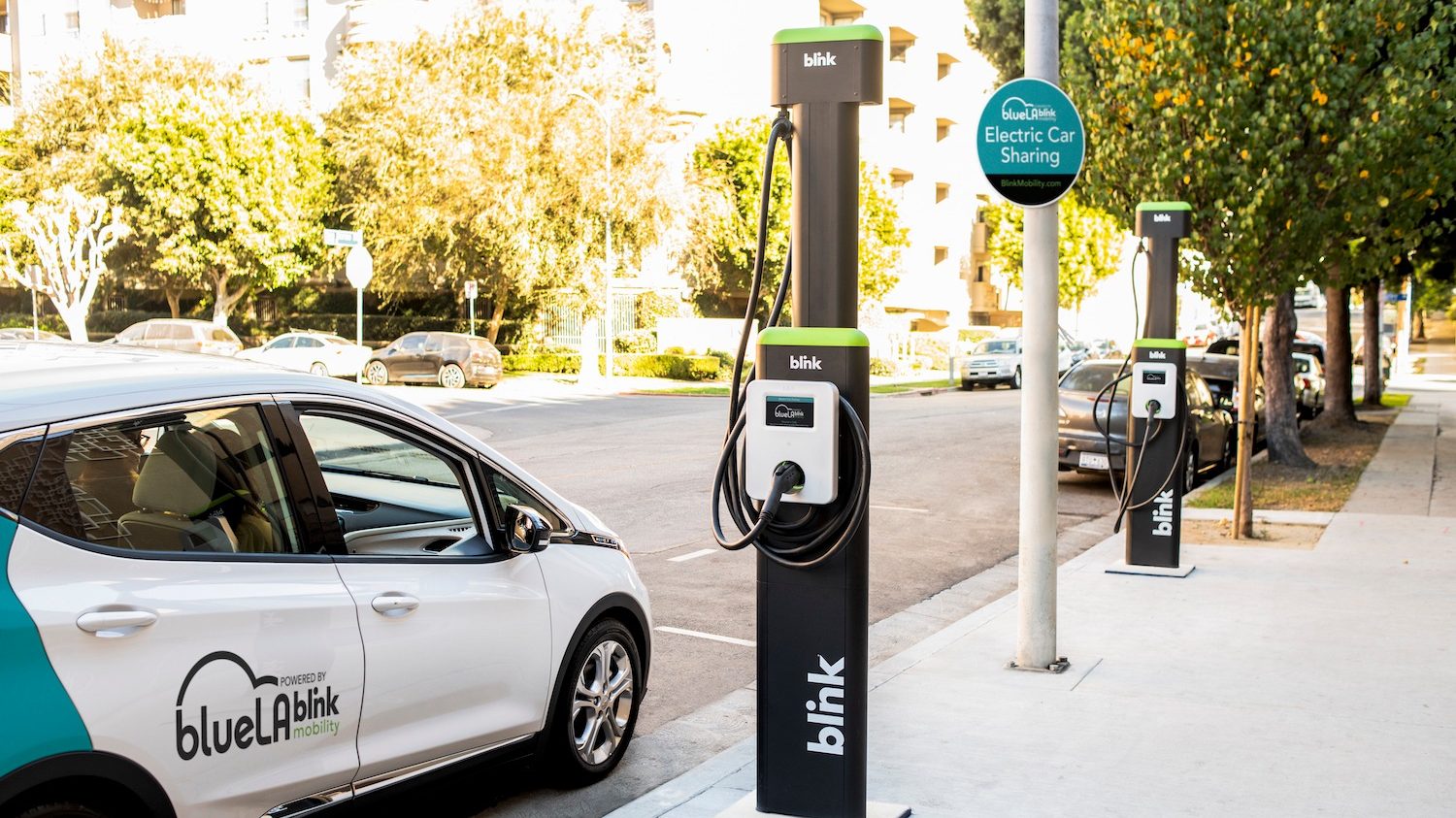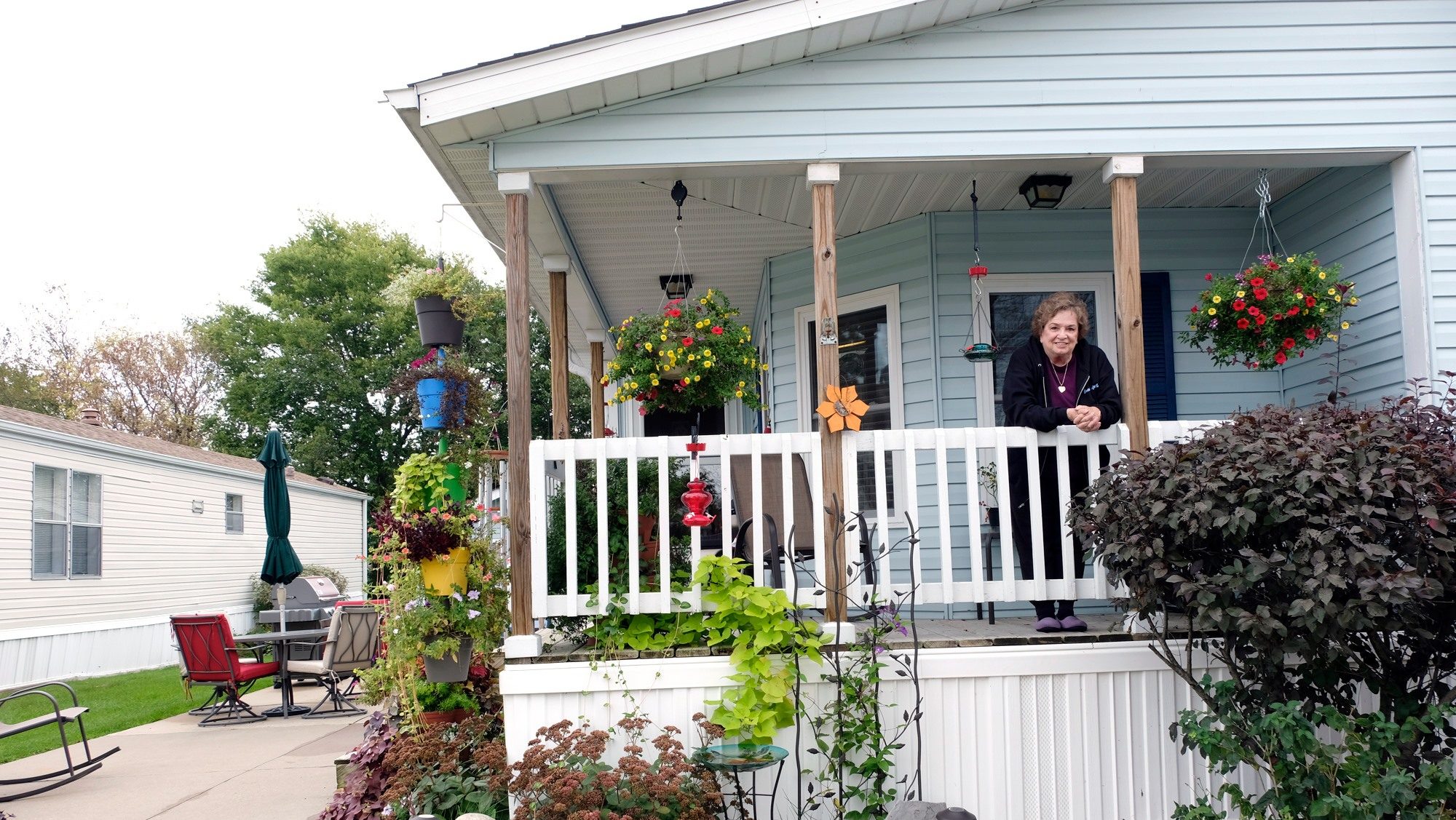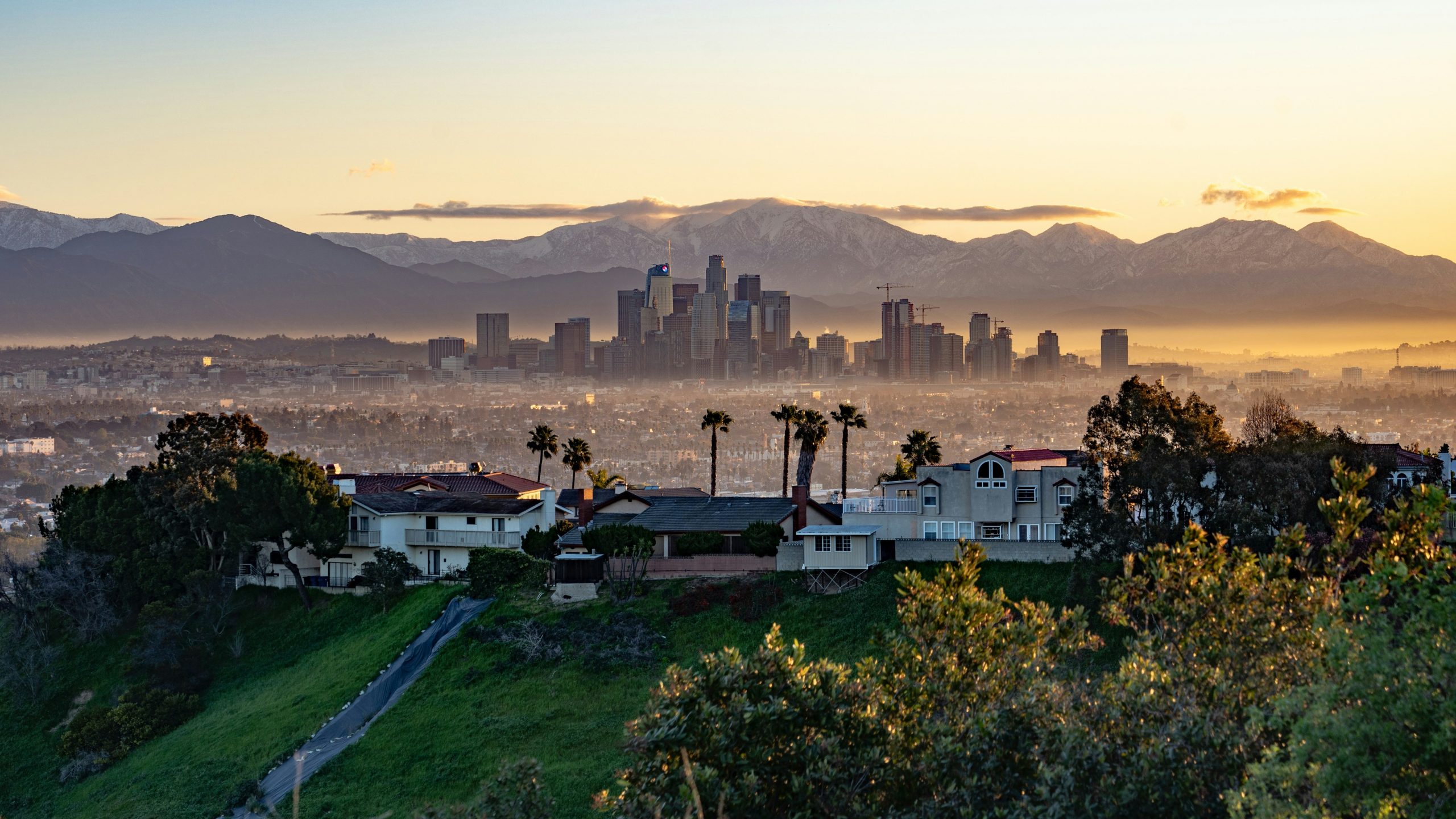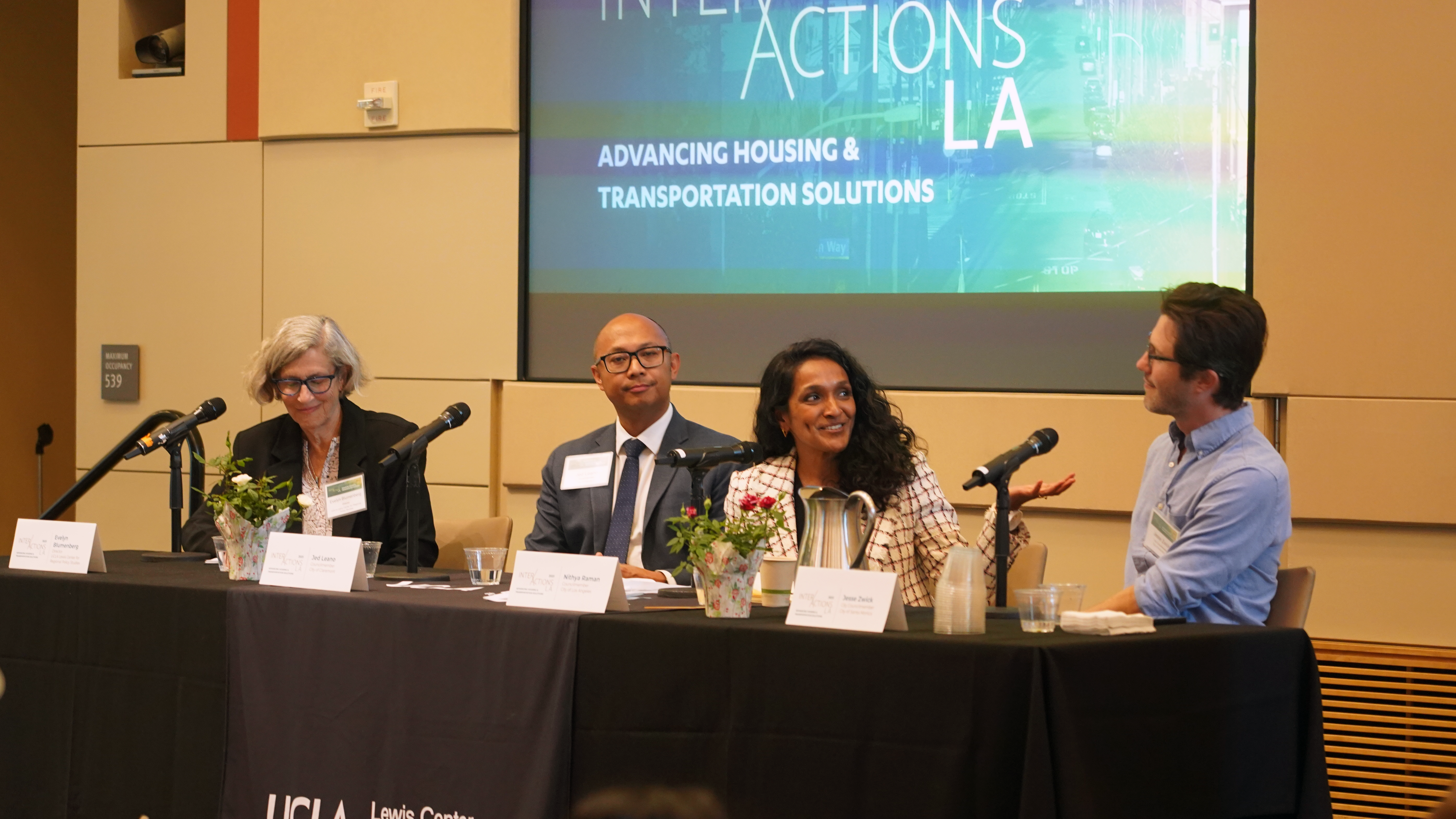
How EV carsharing can drive transportation equity
At 40%, transportation is the largest contributor to greenhouse gas emissions in California. Oftentimes, as public discourse looks to curtail the impact of transportation on environmental goals, the priority is to get people out of their cars.
“Access to a car is essential, and we exacerbate existing inequities when our climate conversation only focuses on the need for people to drive less,” said Seleta Reynolds, general manager of the Los Angeles Department of Transportation, which runs an electric vehicle carsharing program.
BlueLA is one of a handful of EV carsharing programs that have sprung up in recent years around the U.S. to provide short-term car rental services to communities. They eliminate the cost barriers of car ownership while increasing mobility and access to opportunities using greener solutions.
Reynolds joined researchers and industry leaders to discuss the strengths of EV carsharing programs, especially for low-income communities, on May 6 during the Lewis Center’s annual InterActions LA conference.
Speaking of lessons learned from BlueLA’s seven years of service, Reynolds said that government agencies and departments must be more involved.
“There is absolutely a role for the government to think of ourselves as — really something that’s a little bit of a dirty word in the business world, but I think is really important for us to consider in the public sector — which is to think of ourselves as ‘activist investors’,” she said.
“We will not see different outcomes unless [governments] step into the breach, and insist that we include equity — built into program design — either by regulation or by investment.”
The event included a presentation from Lewis Center director Evelyn Blumenberg on the benefits of automobility, in general, and the equity considerations for EV carsharing.
Cars provide shorter travel times and make it easier to make multiple trips. They’re also associated with positive outcomes like employment and use of services. But high percentages of low-income and Black, Asian and Latino households either have no car access or live in a household with fewer cars than drivers. Carsharing allows drivers to pay for only the automobility that they use, eliminating costs associated with car maintenance and storage.
Municipal EV carsharing programs can reduce pollution while strengthening the local economy by providing access to commuters and allowing them to allocate more of their income to local goods and services.
The Largest All-Electric Free-Floating Fleet
In 2018, Sacramento was the first city chosen to participate in Electrify America’s “Green City Program,” an initiative from Volkswagen’s charging infrastructure investment arm. Using these funds, Sacramento partnered with GIG Car Share to purchase and deploy 260 Chevrolet Bolts in a 13-square-mile zone.
“This made Sacramento, just overnight, the largest all-electric free-floating car share program in the nation,” Sacramento city planner Fedolia “Sparky” Harris said.
Fast forward to today, the city’s carshare system has generated over five million EV miles traveled since its inception, according to Harris.
Serving Dispersed, Rural Communities
Unlike Sacramento, the San Joaquin Valley is surrounded by farmland and spread-out communities, resulting in longer commutes for residents. The Central Valley also has the highest concentration of air pollution in California, which made an electric carsharing program appealing. In partnership with Self-Help Enterprises, an affordable housing and community development organization, Miocar was launched to help fill the mobility gaps of its residents.
Caroline Rodier with the UC Davis Institute of Transportation Studies was the lead researcher in a community-based planning study that was initiated in 2013 by the San Joaquin Valley transportation agencies and funded by Caltrans.
“This study identified transport-disadvantaged communities in the Valley, compared shared mobility service concepts, and developed community partners,” Rodier said. “It culminated in a consensus about promising pilot options that could be implemented — like Miocar — which was ultimately funded by the California Climate Investment Fund and local agencies.”
Mio car has been successful because of its heavy focus on community outreach, according to Abigail Solis, manager of sustainable energy solutions with Self-Help Enterprises.
“We understood that often the residents in our communities are unfamiliar with new technologies, and we really focused on the barriers that keep residents and families from participating in these types of programs,” she said.
“In order to achieve true equity, we have to get to a place where all residents have equal access to reliable transportation to shared mobility.”
Providing Auto Access on Housing Sites
The smallest EV carsharing program presented at the event was a two-vehicle fleet located at the Rancho San Pedro public housing site, and operated by the Housing Authority of the City of Los Angeles in partnership with the Los Angeles Cleantech Incubator.
Karla Velasco managed HACLA’s community coach program, which comprised eight residents who were awarded a monthly stipend to engage with and educate the residents about the carsharing program. Velasco credited the EV carsharing program’s success to the community coaches’ efforts. “The residents generally feel more comfortable speaking to someone in person, instead of calling a customer service number.”
What’s Next in EV Carsharing
Creighton Randall, CEO and principal consultant of Mobility Development Group, discussed industry trends and next steps. Mobility Development supports both the start-up and back-office operations of community-controlled shared mobility networks including BlueLA.
He pointed out the importance of factoring in the urban landscape of the city that is planning to host an EV carsharing program. For example, in Los Angeles, parking is a central consideration and that’s why the BlueLA program is all station-based instead of free-floating.
Randall also discussed how demand fuels innovation. “There’s such an infusion of resources that we should be looking at replication, not just what we’ve done so far,” he said.
Sustainable mobility program development “is growing very quickly, and we’re excited about this idea of replication beyond just the models that are in the cookbook, but really cooking with new recipes as well,” he said.
The full recording, including presentations, of InterActions LA 2022 is available online here.



